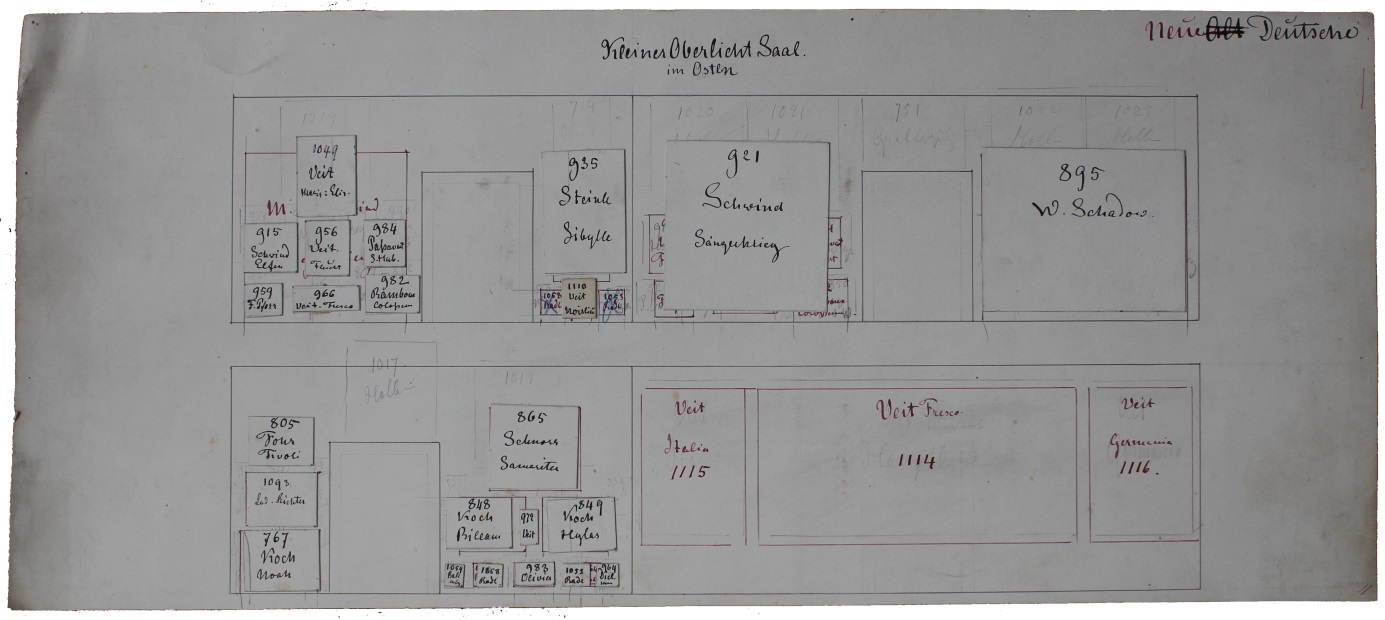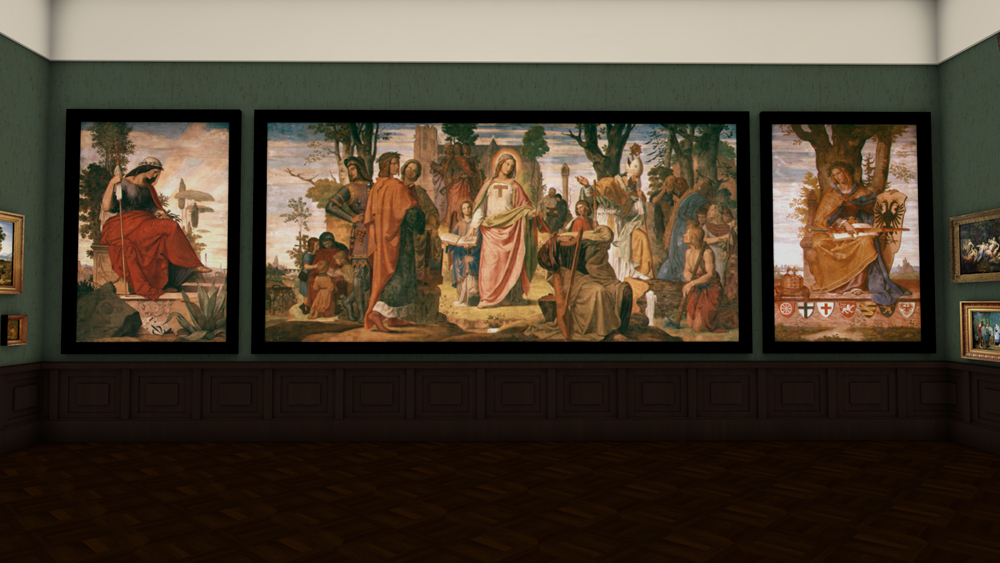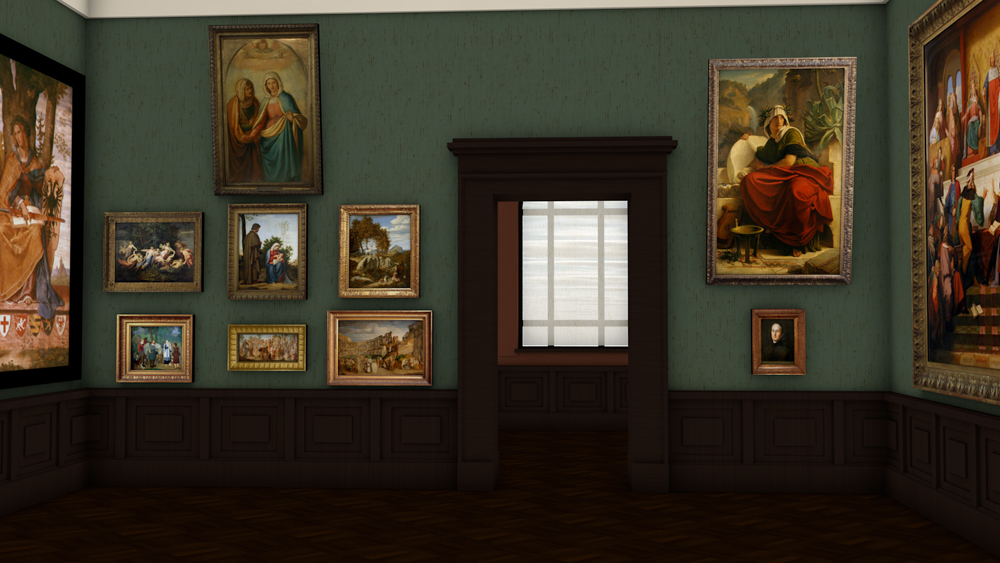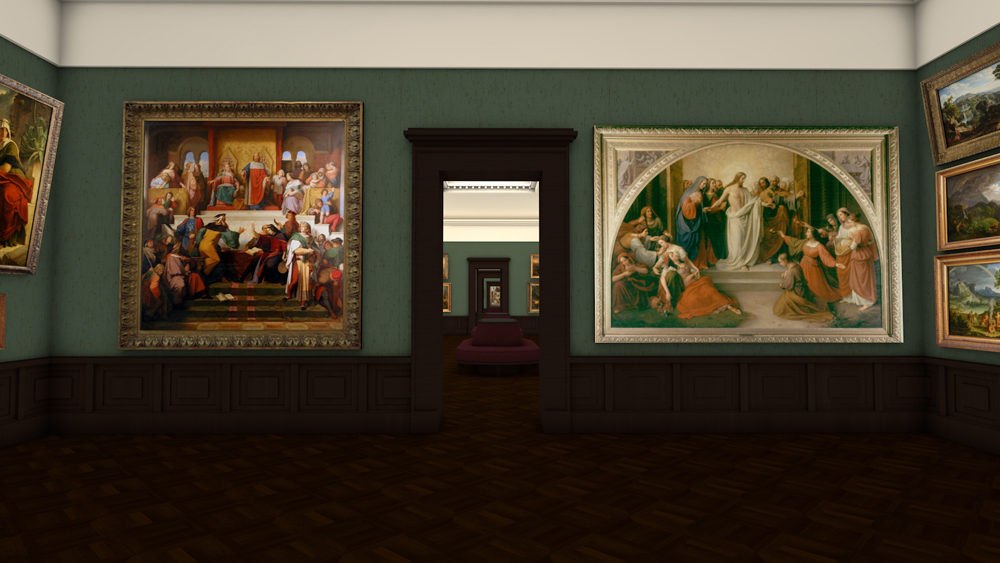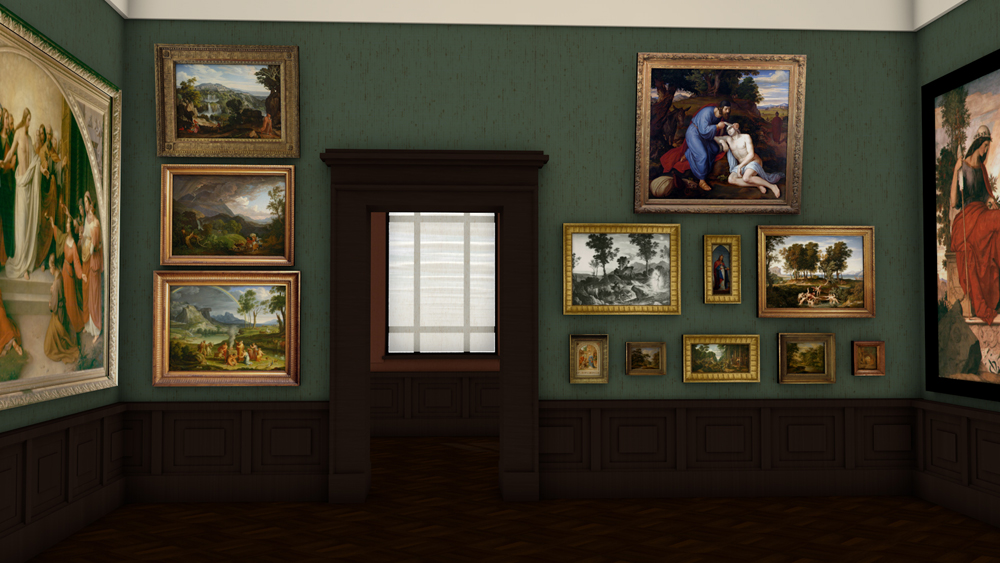1878 Small eastern skylight room
The room
of the Veit fresco
The eastern skylight room was staged as a contemporary, German equivalent to the Italian room in the opposite wing. Presented on the end wall was Philipp Veit’s “Christianity Introducing the Arts in Germany”, flanked by the personifications of Italia and Germania – it was the main contemporary piece of the old Städel.
By request of the Städel Board, former director (and prominent representative of the artists’ group of the Nazarenes) Veit, between 1834 and 1836, had painted the fresco on the longitudinal wall of a room at the Neue Mainzer Strasse adjacent to the skylight room with Early German paintings. Already in 1877, an Italian specialist had been successful in removing the fresco from the wall and transferring it to canvas. As there was not enough room in the small skylight room, the original frame by Edward von Steinle was replaced by a new, possibly also ornamental frame. The programmatic image of Nazarene painting was presented in the midst of other paintings by Veit, as well as by Carl Philipp Fohr, Johann David Passavant, and Joseph Anton Koch. The “Parable of the Wise and Foolish Virgins” by Wilhelm von Schadow and Moritz von Schwind’s “Singer’s Contest on the Wartburg” on the opposite wall had been commissioned by the Art Institute as well; they embodied the ideal of history painting of the first half of the nineteenth century inspired by Italian art.
Basis
for the reconstruction
The original plan for the “Veit room” was spectacularly different: as the longitudinal wall had provided the only possible spot for Veit’s transferred fresco, its position was fixed.
Director Malß, however, had initially not planned to present any contemporary paintings alongside it. With pencil, he had noted the Passion scenes of Hans Holbein the Elder’s altarpiece for the Dominican church, as well as other Early Netherlandish and German paintings. He had thus originally planned a confrontation between older and newer German art.
Our reconstruction is based on the final plan, which was created by Malß by adding pastings to the existing hanging plan. Whether this presentation was actually realised is doubtful, however. The floor plan included in the Directory of 1879 mentions the name Schadow in the northeastern corner room – it would be worth considering whether Schadow’s “Parable of the Wise and Foolish Virgins” hung on the spot of Overbeck’s large cartoon.
